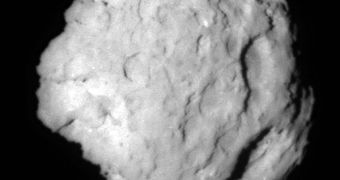The Stardust mission brings surprising new evidence once again. After the initial sample analysis revealed that most of the material inside comet Wild 2 originated in the inner regions of the solar system, now scientists have shown that, against general belief that comets are fluffy dust objects, they could instead have similar composition to that of the asteroids. In 2004 the Stardust mission succeeded in approaching the main body of the comet and collected particles ejected by the 5 kilometer diameter coma, which were returned on Earth in 2006.
As NASA spread the samples to laboratories all over the planet, scientists were able to quickly determine that most of the material originally came from the inner regions of the solar system, as it presented evidence of heating to over 1000 degrees Celsius, processes which only take place in the close proximity of the Sun.
While comparing the dust particles collected from the comet Wild 2's tail with samples from the Earth's upper atmosphere, which - most likely - also come from comets, scientists determined that the particles collected in the atmosphere are mostly made out of glass with embedded metal and sulphides, also known as GEMS. Similar substances were observed in samples collected from Wild 2, but it is largely believed that they could not have come directly from the coma, but might have formed during the impact with the particle collector.
The collector of the Stardust spacecraft was constructed out of aerogel material, which melted as the dust particles penetrated it, creating a glassy mixture similar to that of the GEMS. Further analysis finally showed that the GEMS collected from Wild 2 and those from the Earth's atmosphere have slightly different chemical signatures.
It is now believed that GEMS from the Earth's upper atmosphere could have formed inside comets during the 4.5 billion years of interactions caused by Sun's heat, solar wind and radiation, thus it cannot represent a good sample for studying materials formed in the early age of the solar system.
Most of the short period comets are thought to have originated somewhere in the asteroid belt and got ejected towards the outer regions of the solar system, where they collected material that formed in the inner regions of the solar system but was pushed towards the other regions by the solar wind.
However, the conclusions drawn by astronomers pose no danger to reclassifying Wild 2; it will still remain a comet even though it presents asteroid-like characteristics, and the newly found evidence should be regarded more like a link between comets and asteroids. Comets, unlike asteroids, eject large quantities of dust and ice while coming in the proximity of the Sun and produce long Tails of debris that are eventually dispersed by the Sun's heat.

 14 DAY TRIAL //
14 DAY TRIAL //